Sunflower
-
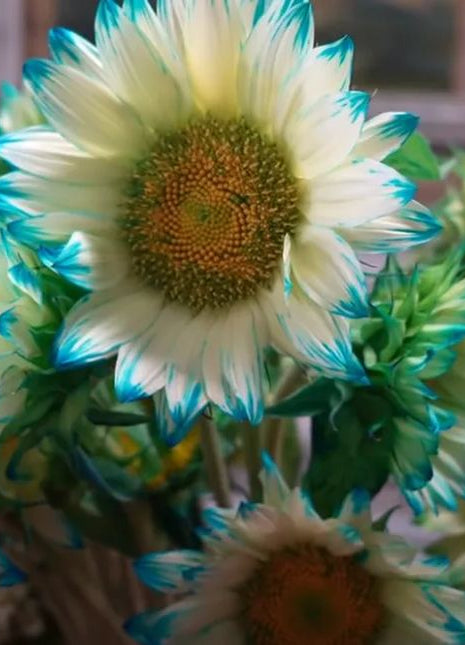
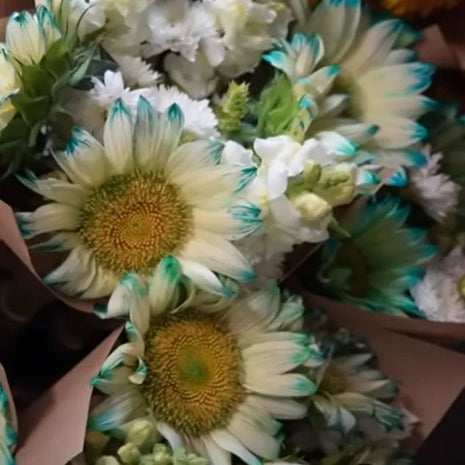
mysite Blue Lace Sunflower Seeds
For every order we generate. we donate $1 to the World Conservation Organization (WCO). About Sunflowers The sunflower (Helianthus annuus) is an annual plant with a sizeable daisy-like flower face. Its scientific name comes from the Greek words helios (“sun”) and anthos (“flower”). The flowers come in many colors (yellow. blue.purple.black.white.green.pink.red. orange. maroon. brown). but they are commonly bright yellow with brown centers that ripen into heavy heads filled with seeds. Sunflowers make excellent cut flowers. and many attract bees. birds. and butterflies. Sunflowers are heliotropic. which means that they turn their flowers to follow the movement of the Sun across the sky from east to west and then return at night to face the east. ready again for the morning sun. A moistish environment is all the seeds need. there are no need for too much water or fertilizer in the germination.Generally 3 to 4 weeks it will sprout. When to Plant Sunflowers It's best to sow sunflower seeds directly into the garden (or outdoor containers) after the danger of spring frost has passed. anytime after soils have warmed to at least 50°F (10°C). In the northern half of the U.S. and in Canada. this will fall between April and mid-June. In the South. this will probably occur in mid-March or early April. Sunflowers dislike having their roots disturbed. so we recommend direct sowing instead of transplanting. Planting Sunflower Seeds Sunflowers should be planted 1 to 1½ inches deep and about 6 inches apart after the soil has thoroughly warmed. If you wish. you can plant multiple seeds and thin them to the strongest contenders when the plants are six inches tall. Give plants plenty of room. especially for low-growing varieties that will branch out. Make rows about 30 inches apart. (For very small varieties. plant closer together.) A light application of fertilizer mixed in at planting time will encourage strong root growth to protect them from blowing over in the wind. Experiment with plantings staggered over 5 to 6 weeks to keep enjoying continuous blooms. If you see birds scratching around for the seeds. spread netting over the planted area until seeds germinate.
$8.99 - $14.99
-
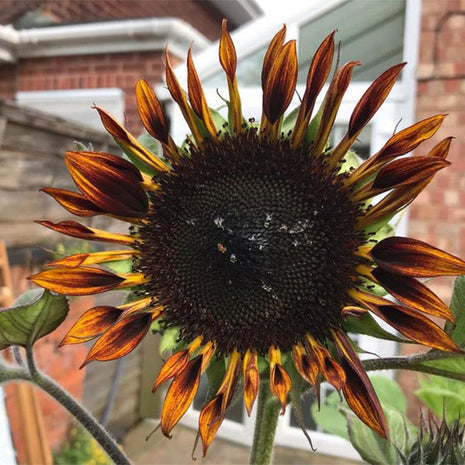
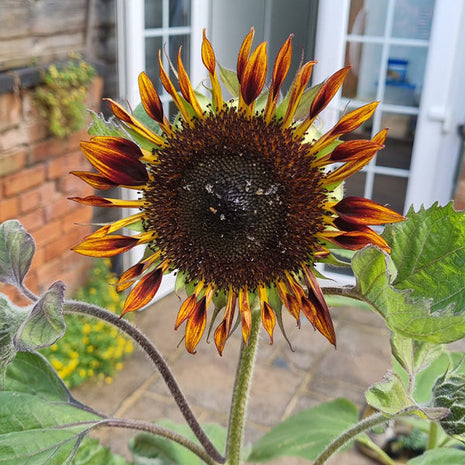
GardenerStar Tiger Sunflower Seeds
Rejoice. sunflower lovers! Our radiant new bicolor beauties have it all. for garden. vase. and happy bees. butterflies. and other pollinators. Enjoy a bounty of up to eight 5-inch blooms per plant — you'll get armloads of bright bouquets. The blooming plants look balanced rather than top-heavy. thanks to a sturdy branching habit. Their shorter stature makes harvesting easy. They'd be fantastic for containers on a porch or patio. too. About this item CERTIFIED ORGANIC SEEDS: In your garden or greenhouse these beautiful organic sunflower seeds bloom into an array of Tiger's Eye colors that bring beneficial insects & pollination to your garden. FLOWER GARDEN: Hone your green thumb for these beautiful organic flower seeds. Plant & watch them grow in garden beds. terra cotta pots and outdoors to promote pollination and natural pest control. SEEDS FOR PLANTING: These certified organic seeds are pesticide-free & non-GMO. Moisture-proof packets with a resealable zipper keep seeds viable for up to 3 years. Perfect especially for heirloom seeds. SEED TO PLATE: What began as curiosity about urban farming turned into a passion to reconnect families to food by creating an experience for people to cherish the goodness of nature in their gardens. ORGANIC GARDENING: Seeds of Change was built on the premise of preserving biodiversity. sustainability. & organic seeds with the promise of making organic foods available to gardeners & farmers since 1989.
$8.99 - $12.99
-
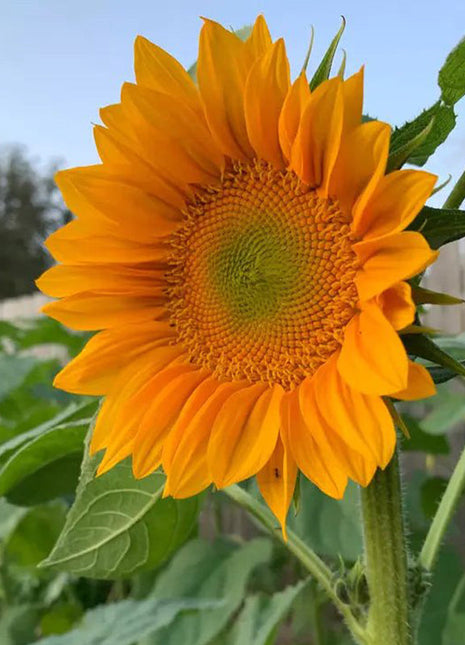
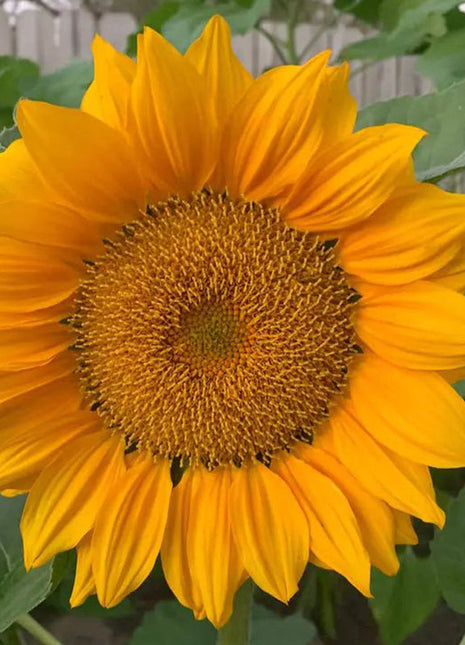
safh456 30Pcs Pro Gold Lite Sunflower Seeds
Pro Gold Lite Sunflowers are arguably the most beautiful classic sunflowers. They are perfect for cut flowers or just as a flower that will add some color to your garden. This variety is one of the easiest to grow. meaning you get effortless blooms. One stunning feature of this variety is the green center of the flower. This is a must-have flower for any garden! Height: 4-6ft Main Flower Size: 5-7 inches Blooms in: 55-60 Days Seed Depth: 5-1 inch
$6.99
-
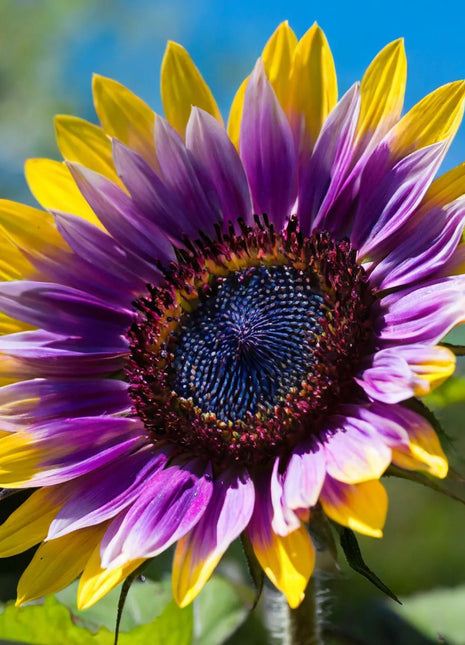
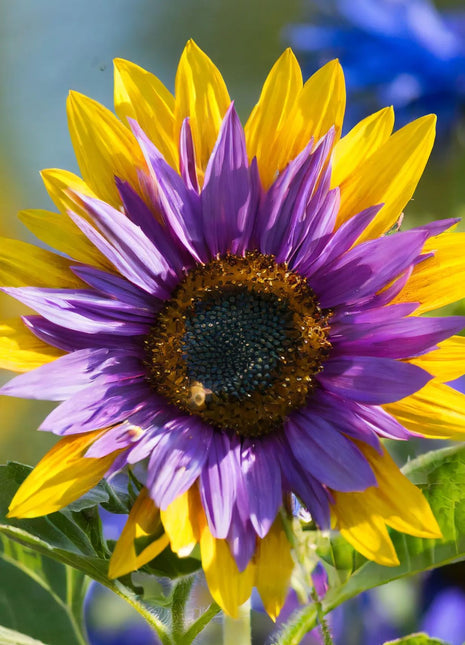
mysite Purple Heart Sunflower Seeds
Welcome to the Enchanting World of Purple Heart Sunflowers 🌻💜 Unveiling Nature's Masterpiece Step into a realm where the ordinary transforms into the extraordinary. The Purple Heart Sunflower. a botanical marvel. boasts vibrant hues and an unmistakable charm that will elevate your garden to a realm of enchantment. Why Choose Purple Heart Sunflowers? 🌈 Regal Radiance: Unlike traditional sunflowers. the Purple Heart variety showcases a majestic blend of rich purples and sunny yellows. It's not just a flower; it's a statement of elegance. 🌞 Sun-Kissed Brilliance: Thriving under sunlight. these sunflowers are a celebration of nature's brilliance. Plant them where they can soak up the sun. and watch as their petals unfurl in dazzling splendor. 💧 Low-Maintenance Elegance: Effortlessly elegant. Purple Heart Sunflowers are surprisingly easy to care for. With minimal attention. you'll witness a burst of color that lasts throughout the season. Cultivating Your Purple Heart Sunflowers Choose a Radiant Spot: Select a location that receives abundant sunlight. These sunflowers love to bask in the sun's warmth. Prepare the Stage: Ensure well-drained soil enriched with organic matter. A touch of love in the soil goes a long way for these floral gems. Planting Magic: Sow the seeds about 1 to 2 inches deep. allowing them space to embrace their full splendor. Watering Ritual: Keep the soil consistently moist. and remember – a delicate balance is key. Allow the soil to dry slightly between watering. Witness the Unveiling: As your Purple Heart Sunflowers grow. anticipate the magical moment when the regal hues come to life. Create a Symphony of Color: Once in full bloom. your garden will be transformed into a symphony of purples and yellows – a testament to the beauty of nature. Experience the Extraordinary Purple Heart Sunflowers are more than a plant; they're a testament to the awe-inspiring beauty that nature can create. Cultivate a garden that radiates elegance and charm with these exceptional blooms. Embrace the extraordinary – plant Purple Heart Sunflowers today! 🌻💜✨
$7.99 - $19.99
-
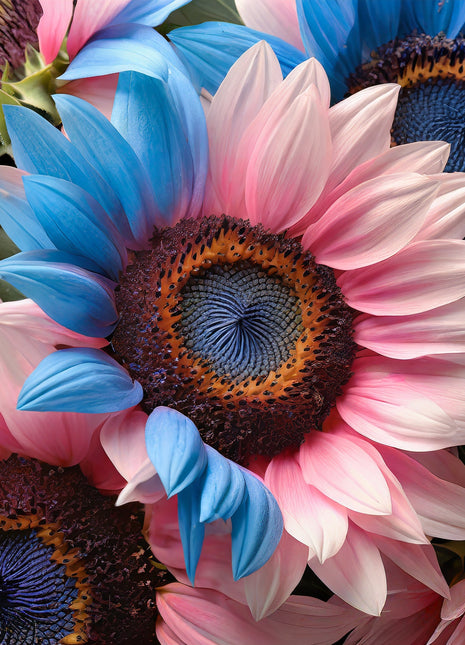
mysite Twin-Blossom Half Pink, Half Blue Sunflower
Welcome to Our Exclusive Collection! Step into a world of botanical wonder with our extraordinary creation - Twin-Blossom Half Pink. Half Blue Sunflower Seeds. These sunflowers. with their rare double-blossoms featuring half pink petals on the left and half blue on the right. are here to bring enchantment to your garden. 🌻🌻 Embrace the Beauty of Nature 🌿 The Twin-Blossom Sunflower. a botanical marvel. offers a unique spectacle. With its exquisite pairing of pink and blue petals. this sunflower is unlike any other. Each petal is a masterpiece of nature's artistry. adding a touch of whimsy to your garden. It's the ultimate summer showstopper! 🌻🌻 Easy Planting - Just Like Traditional Sunflowers! 🌱 Growing Twin-Blossom Half Pink. Half Blue Sunflowers is as easy as tending to traditional sunflowers. Follow these simple steps: Select the Right Spot: Choose a sunny area with well-draining soil. These sunflowers thrive in sunlight. Plant the Seeds: Plant the Twin-Blossom Sunflower seeds just as you would with regular sunflowers. Space them adequately to allow room for the unique double blossoms. Water and Watch: Keep the soil consistently moist. but avoid waterlogging. Twin-Blossom Sunflowers are low-maintenance. and their distinct charm will soon adorn your garden. Marvel in the Double Beauty: Watch as your garden comes alive with the captivating combination of half pink and half blue petals. These sunflowers are a testament to the wonders of nature. 🌟 Limited Stock - Act Now! ⏳ Due to the rarity and charm of Twin-Blossom Half Pink. Half Blue Sunflower Seeds. our stock is limited. Don't miss the opportunity to add these captivating and whimsical blooms to your garden. Each seed holds the promise of a magical and charming garden. guarded by the enchantment of these unique sunflowers. Act quickly before they're gone! Acquire Twin-Blossom Half Pink. Half Blue Sunflower Seeds and Elevate Your Garden's Beauty! 🛍️🌻🌻
$7.99 - $19.99
-
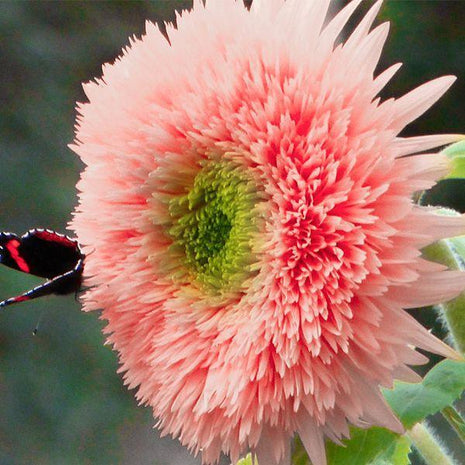
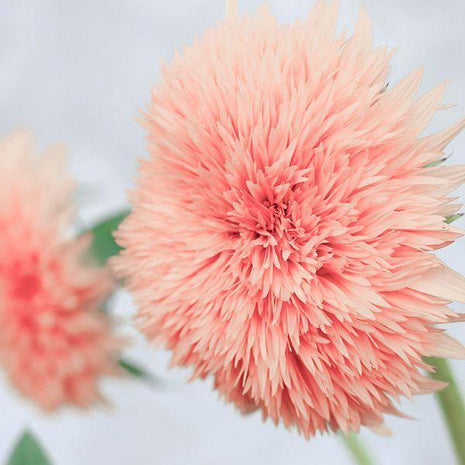
Meicco Pink Pooh Sunflower
A new variety of sunflower with a seed survival rate of 93% Product Details Sow Method Direct Sow Sun Full Sun Height 3-4 feet Spread 15-30 inches Ornamental Use Beds. Container. Cut Flowers Life Cycle Annual Growing Information Sunflowers are grown from seed sown directly in the garden after frost. Direct sow seeds in average soil in full sun after all danger of frost. When choosing a site consider that sunflowers need a well-drained soil. They face the sun. so make sure they are in an open area of the garden. The taller varieties will cast shadows on other plants. so plant these at the north end of your garden. Prepare the soil by removing weeds and working organic matter into the top 6-8 inches of soil; then level and smooth. Most plants respond well to soils amended with organic matter. Compost is a wonderful form of organic matter with a good balance of nutrients and an ideal pH level. it can be added to your planting area at any time. If compost is not available. top dress the soil after planting with 1-2 inches of organic mulch. which will begin to breakdown into compost. After the growing season. a soil test will indicate what soil amendments are needed for the following season. Sow seeds ½ inch deep in groups of 2 or 3 seeds. Space the groups 18-24 inches apart. depending on the variety. Firm soil lightly. water and keep evenly moist. Seedlings will emerge in 7-10 days. Thin to one plant per group when seedlings have two sets of leaves. Keep weeds under control during the growing season. Weeds compete with plants for water. space and nutrients. so control them by either cultivating often or use a mulch to prevent their seeds from germinating. Mulches also help retain soil moisture and maintain even soil temperatures. For annuals an organic mulch of shredded leaves lends a natural look to the bed and will improve the soil as it breaks down in time. Always keep mulches off a plant's stems to prevent possible rot. Keep soil evenly moist but not wet. Once established sunflowers can tolerate drought. No fertilizer is needed unless the soil is poor. Do not over fertilize. Monitor for pests and diseases. Check with your local Cooperative Extension Service for pest controls recommended for your area. Some varieties only produce one bloom so once the bloom is spent. the plant may be removed. Remove plants after they are killed by frost in fall to avoid disease issues the following year. Edible sunflowers will mature in about 3 months or more after sowing. To harvest the seeds. cut the heads off after the stalks are quite dry but before fall or winter rains come. Check the flower heads for maturity to see if the florets in the center of the flower disk have shriveled and the back of the flower head is turning yellow. or the head is starting to droop. Cut flower-heads with a foot of the stalk attached. Hang heads in a warm. dry. well-ventilated place so the seeds may fully ripen and dry. Cheesecloth. netting or a paper bag with holes punched in for ventilation should be placed over the head to protect the seeds and to collect those that may drop from drying. Shorter varieties may be grown in containers. Be sure to use a commercial potting mix. Pollenless varieties make terrific cut flowers.
$7.99 - $12.98
-

Supernova Bright Blue Sunflower Seeds
Product Details Type Dwarf Sun Full Sun Height 24-36 inches Spread 14-16 inches Ornamental Use Beds. Container. Cut Flowers Life Cycle Annual Growing Information Sunflowers are grown from seed sown directly in the garden after frost. Direct sow seeds in average soil in full sun after all danger of frost. When choosing a site consider that sunflowers need a well-drained soil. They face the sun. so make sure they are in an open area of the garden. The taller varieties will cast shadows on other plants. so plant these at the north end of your garden. Prepare the soil by removing weeds and working organic matter into the top 6-8 inches of soil; then level and smooth. Most plants respond well to soils amended with organic matter. Compost is a wonderful form of organic matter with a good balance of nutrients and an ideal pH level. it can be added to your planting area at any time. If compost is not available. top dress the soil after planting with 1-2 inches of organic mulch. which will begin to breakdown into compost. After the growing season. a soil test will indicate what soil amendments are needed for the following season. Sow seeds ½ inch deep in groups of 2 or 3 seeds. Space the groups 18-24 inches apart. depending on the variety. Firm soil lightly. water and keep evenly moist. Seedlings will emerge in 7-10 days. Thin to one plant per group when seedlings have two sets of leaves. Keep weeds under control during the growing season. Weeds compete with plants for water. space and nutrients. so control them by either cultivating often or use a mulch to prevent their seeds from germinating. Mulches also help retain soil moisture and maintain even soil temperatures. For annuals an organic mulch of shredded leaves lends a natural look to the bed and will improve the soil as it breaks down in time. Always keep mulches off a plant's stems to prevent possible rot. Keep soil evenly moist but not wet. Once established sunflowers can tolerate drought. No fertilizer is needed unless the soil is poor. Do not over fertilize. Monitor for pests and diseases. Check with your local Cooperative Extension Service for pest controls recommended for your area. Some varieties only produce one bloom so once the bloom is spent. the plant may be removed. Remove plants after they are killed by frost in fall to avoid disease issues the following year. Edible sunflowers will mature in about 3 months or more after sowing. To harvest the seeds. cut the heads off after the stalks are quite dry but before fall or winter rains come. Check the flower heads for maturity to see if the florets in the center of the flower disk have shriveled and the back of the flower head is turning yellow. or the head is starting to droop. Cut flower-heads with a foot of the stalk attached. Hang heads in a warm. dry. well-ventilated place so the seeds may fully ripen and dry. Cheesecloth. netting or a paper bag with holes punched in for ventilation should be placed over the head to protect the seeds and to collect those that may drop from drying. Shorter varieties may be grown in containers. Be sure to use a commercial potting mix. Pollenless varieties make terrific cut flowers.
$5.99 - $8.99
-
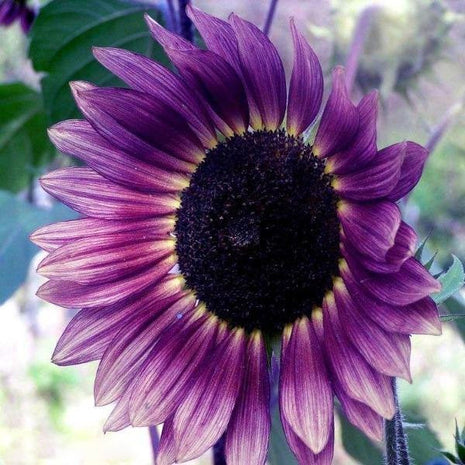
Supernova 100 Seeds Rare Color Purple Sunflower
Product Details Type Dwarf Sun Full Sun Height 24-36 inches Spread 14-16 inches Ornamental Use Beds. Container. Cut Flowers Life Cycle Annual Growing Information Sunflowers are grown from seed sown directly in the garden after frost. Direct sow seeds in average soil in full sun after all danger of frost. When choosing a site consider that sunflowers need a well-drained soil. They face the sun. so make sure they are in an open area of the garden. The taller varieties will cast shadows on other plants. so plant these at the north end of your garden. Prepare the soil by removing weeds and working organic matter into the top 6-8 inches of soil; then level and smooth. Most plants respond well to soils amended with organic matter. Compost is a wonderful form of organic matter with a good balance of nutrients and an ideal pH level. it can be added to your planting area at any time. If compost is not available. top dress the soil after planting with 1-2 inches of organic mulch. which will begin to breakdown into compost. After the growing season. a soil test will indicate what soil amendments are needed for the following season. Sow seeds ½ inch deep in groups of 2 or 3 seeds. Space the groups 18-24 inches apart. depending on the variety. Firm soil lightly. water and keep evenly moist. Seedlings will emerge in 7-10 days. Thin to one plant per group when seedlings have two sets of leaves. Keep weeds under control during the growing season. Weeds compete with plants for water. space and nutrients. so control them by either cultivating often or use a mulch to prevent their seeds from germinating. Mulches also help retain soil moisture and maintain even soil temperatures. For annuals an organic mulch of shredded leaves lends a natural look to the bed and will improve the soil as it breaks down in time. Always keep mulches off a plant's stems to prevent possible rot. Keep soil evenly moist but not wet. Once established sunflowers can tolerate drought. No fertilizer is needed unless the soil is poor. Do not over fertilize. Monitor for pests and diseases. Check with your local Cooperative Extension Service for pest controls recommended for your area. Some varieties only produce one bloom so once the bloom is spent. the plant may be removed. Remove plants after they are killed by frost in fall to avoid disease issues the following year. Edible sunflowers will mature in about 3 months or more after sowing. To harvest the seeds. cut the heads off after the stalks are quite dry but before fall or winter rains come. Check the flower heads for maturity to see if the florets in the center of the flower disk have shriveled and the back of the flower head is turning yellow. or the head is starting to droop. Cut flower-heads with a foot of the stalk attached. Hang heads in a warm. dry. well-ventilated place so the seeds may fully ripen and dry. Cheesecloth. netting or a paper bag with holes punched in for ventilation should be placed over the head to protect the seeds and to collect those that may drop from drying. Shorter varieties may be grown in containers. Be sure to use a commercial potting mix. Pollenless varieties make terrific cut flowers.
$5.99 - $9.99
-
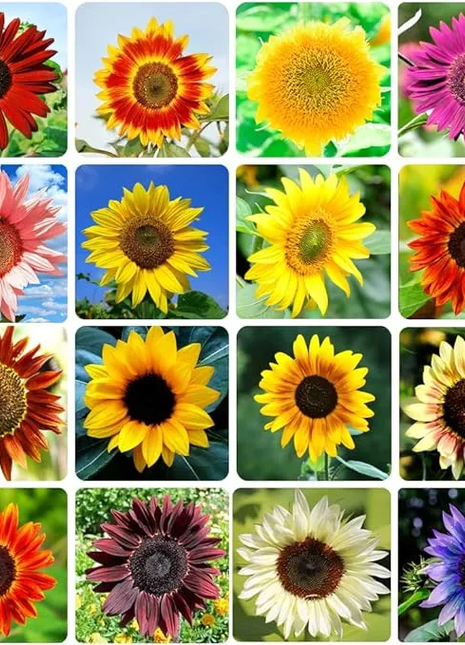
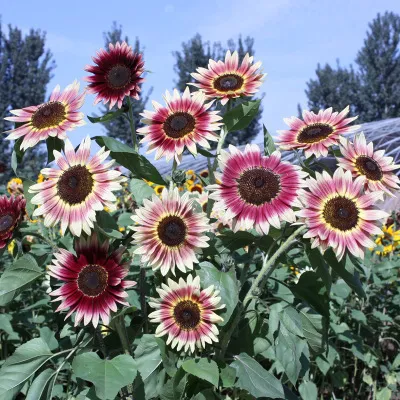
My Store 🌺Last Day Sale--60% Off💐 Sunflower Seeds🌻Sunshine
We are committed to providing our customers with quality. affordable seeds. 🌱 💵 Payments Via PayPal® 😍 99.3% of customers buy 100 Seeds(15% Off) or more to share with family or friends ✨Priority is given to delivery after payment ✈ Worldwide Express Shipping Available Multi-headed sunflowers are called large-flowered sunflowers. Its flowers are beautiful in color and beautiful in appearance. Multi-branched multi-headed sunflower species. very rare. suitable for garden planting. one can produce 5-10 flowers. ❤️Meaning: This kind of sunflower symbolizes innocence and cuteness. It can usually be given to friends who still have innocence in their hearts and face life positively. It is also suitable to be given to children who are still in childhood. 🎀Value :They can be used as potted plants to decorate small courtyards or windowsills. and can also be placed in public places or scenic spots. They are novel landscaping plants. In addition. they can also be used as fresh cut flower plants for viewing. Precautions for planting Although multi-headed sunflower has strong adaptability and low requirements. it is a plant that prefers ventilation and sunshine. When planting. it is necessary to choose a sunny place. and at the same time. it cannot be planted too much. Planting too densely will result in slow plant growth. Our Guarantee We truly believe we carry some of the most innovative products in the world. and we want to make sure we back that up with a risk-free 90-day guarantee. If you don't have a positive experience for ANY reason. we will do WHATEVER it takes to make sure you are 100% satisfied with your purchase. Buying items online can be a daunting task. so we want you to realize that there is absolutely ZERO risks in buying something and trying it out. If you don't like it. no hard feelings we'll make it right. We have 24/7/365 Ticket and Email Support. Please contact us if you need assistance.
$8.99 - $22.99
-
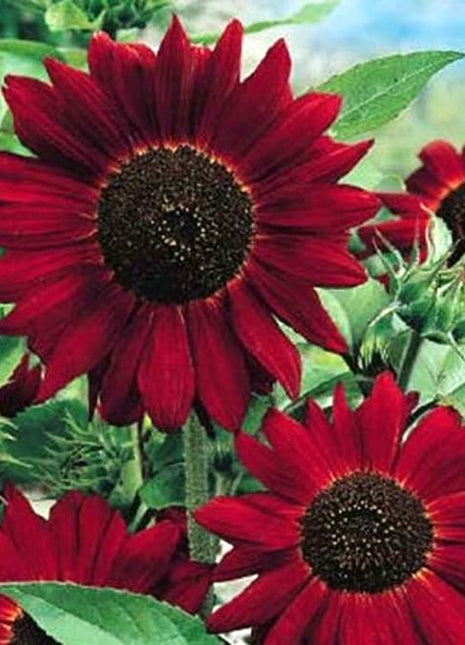
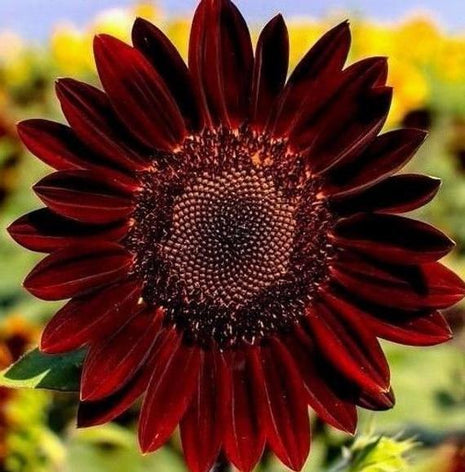
Supernova Red Wave Hybrid Sunflower Seeds
Product Details Sow Method Direct Sow Sun Full Sun Height 3-4 feet Spread 15-30 inches Ornamental Use Beds. Container. Cut Flowers Life Cycle Annual Growing Information Sunflowers are grown from seed sown directly in the garden after frost. Direct sow seeds in average soil in full sun after all danger of frost. When choosing a site consider that sunflowers need a well-drained soil. They face the sun. so make sure they are in an open area of the garden. The taller varieties will cast shadows on other plants. so plant these at the north end of your garden. Prepare the soil by removing weeds and working organic matter into the top 6-8 inches of soil; then level and smooth. Most plants respond well to soils amended with organic matter. Compost is a wonderful form of organic matter with a good balance of nutrients and an ideal pH level. it can be added to your planting area at any time. If compost is not available. top dress the soil after planting with 1-2 inches of organic mulch. which will begin to breakdown into compost. After the growing season. a soil test will indicate what soil amendments are needed for the following season. Sow seeds ½ inch deep in groups of 2 or 3 seeds. Space the groups 18-24 inches apart. depending on the variety. Firm soil lightly. water and keep evenly moist. Seedlings will emerge in 7-10 days. Thin to one plant per group when seedlings have two sets of leaves. Keep weeds under control during the growing season. Weeds compete with plants for water. space and nutrients. so control them by either cultivating often or use a mulch to prevent their seeds from germinating. Mulches also help retain soil moisture and maintain even soil temperatures. For annuals an organic mulch of shredded leaves lends a natural look to the bed and will improve the soil as it breaks down in time. Always keep mulches off a plant's stems to prevent possible rot. Keep soil evenly moist but not wet. Once established sunflowers can tolerate drought. No fertilizer is needed unless the soil is poor. Do not over fertilize. Monitor for pests and diseases. Check with your local Cooperative Extension Service for pest controls recommended for your area. Some varieties only produce one bloom so once the bloom is spent. the plant may be removed. Remove plants after they are killed by frost in fall to avoid disease issues the following year. Edible sunflowers will mature in about 3 months or more after sowing. To harvest the seeds. cut the heads off after the stalks are quite dry but before fall or winter rains come. Check the flower heads for maturity to see if the florets in the center of the flower disk have shriveled and the back of the flower head is turning yellow. or the head is starting to droop. Cut flower-heads with a foot of the stalk attached. Hang heads in a warm. dry. well-ventilated place so the seeds may fully ripen and dry. Cheesecloth. netting or a paper bag with holes punched in for ventilation should be placed over the head to protect the seeds and to collect those that may drop from drying. Shorter varieties may be grown in containers. Be sure to use a commercial potting mix. Pollenless varieties make terrific cut flowers.
$5.99 - $8.99
-
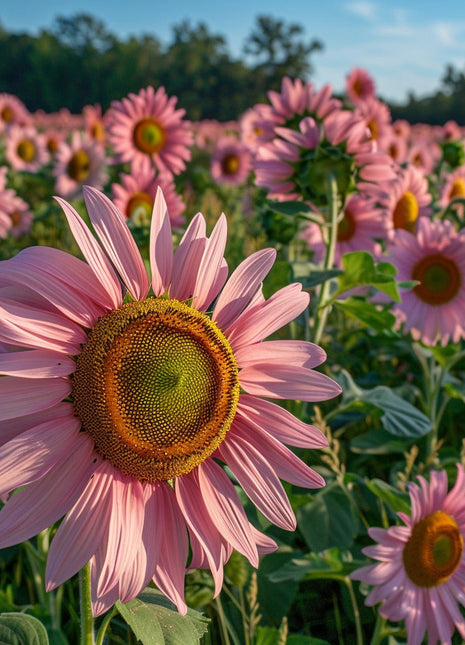
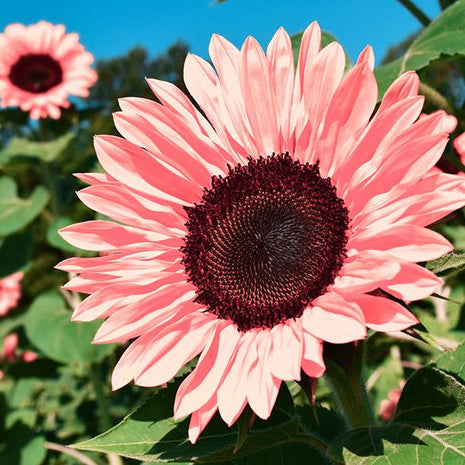
Meicco Iris Tectorum Rose Sunflower 50Pcs Pink Sunflower Seeds Pink Sunflower Seeds
Product Details Sow Method Direct Sow Sun Full Sun Height 3-4 feet Spread 15-30 inches Ornamental Use Beds. Container. Cut Flowers Life Cycle Annual Growing Information Sunflowers are grown from seed sown directly in the garden after frost. Direct sow seeds in average soil in full sun after all danger of frost. When choosing a site consider that sunflowers need a well-drained soil. They face the sun. so make sure they are in an open area of the garden. The taller varieties will cast shadows on other plants. so plant these at the north end of your garden. Prepare the soil by removing weeds and working organic matter into the top 6-8 inches of soil; then level and smooth. Most plants respond well to soils amended with organic matter. Compost is a wonderful form of organic matter with a good balance of nutrients and an ideal pH level. it can be added to your planting area at any time. If compost is not available. top dress the soil after planting with 1-2 inches of organic mulch. which will begin to breakdown into compost. After the growing season. a soil test will indicate what soil amendments are needed for the following season. Sow seeds ½ inch deep in groups of 2 or 3 seeds. Space the groups 18-24 inches apart. depending on the variety. Firm soil lightly. water and keep evenly moist. Seedlings will emerge in 7-10 days. Thin to one plant per group when seedlings have two sets of leaves. Keep weeds under control during the growing season. Weeds compete with plants for water. space and nutrients. so control them by either cultivating often or use a mulch to prevent their seeds from germinating. Mulches also help retain soil moisture and maintain even soil temperatures. For annuals an organic mulch of shredded leaves lends a natural look to the bed and will improve the soil as it breaks down in time. Always keep mulches off a plant's stems to prevent possible rot. Keep soil evenly moist but not wet. Once established sunflowers can tolerate drought. No fertilizer is needed unless the soil is poor. Do not over fertilize. Monitor for pests and diseases. Check with your local Cooperative Extension Service for pest controls recommended for your area. Some varieties only produce one bloom so once the bloom is spent. the plant may be removed. Remove plants after they are killed by frost in fall to avoid disease issues the following year. Edible sunflowers will mature in about 3 months or more after sowing. To harvest the seeds. cut the heads off after the stalks are quite dry but before fall or winter rains come. Check the flower heads for maturity to see if the florets in the center of the flower disk have shriveled and the back of the flower head is turning yellow. or the head is starting to droop. Cut flower-heads with a foot of the stalk attached. Hang heads in a warm. dry. well-ventilated place so the seeds may fully ripen and dry. Cheesecloth. netting or a paper bag with holes punched in for ventilation should be placed over the head to protect the seeds and to collect those that may drop from drying. Shorter varieties may be grown in containers. Be sure to use a commercial potting mix. Pollenless varieties make terrific cut flowers.
$6.99 - $19.99
-
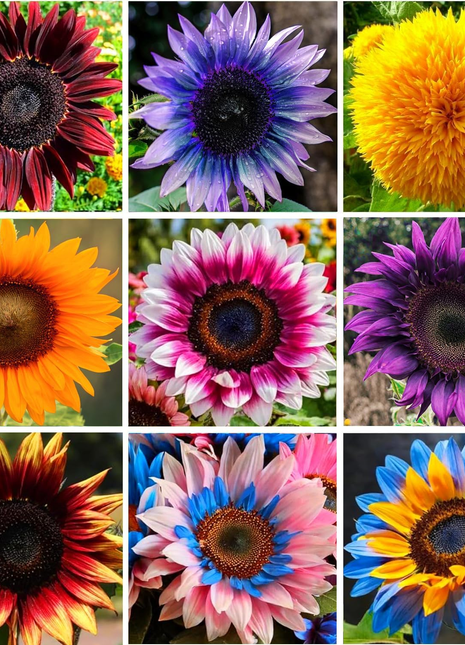
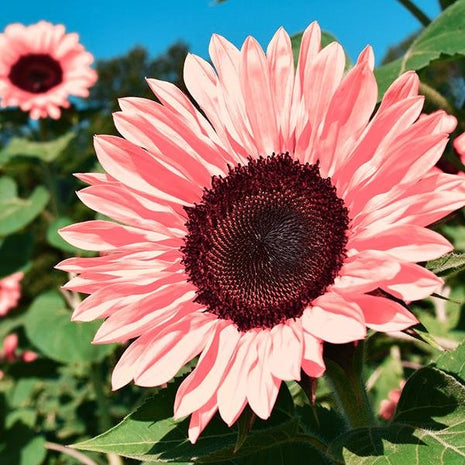
My Store 🌻50+ Mixed Color Sunflowers
🪴We are committed to providing our customers with quality. affordable seeds. 🌱 💵 Payments Via PayPal® 😍 99.3% of customers buy 2 items(10% Off) or more to share with family or friends ✨Priority is given to delivery after payment ✈ Worldwide Express Shipping Available Description Brighten Your Garden with 50+ Mixed Color Sunflowers! 🌻🌈 Transform your garden into a vibrant paradise with our 50+ Mixed Color Sunflowers! This spectacular mix of sunflowers in bold yellows. fiery oranges. deep reds. and multi-colored hues will bring cheer and beauty to any space. Perfect for gardens. flower borders. and bouquets. these sunflowers are an easy-to-grow favorite for gardeners of all levels. 🌱 Product Information Plant Type: Annual Height: 3 to 6 feet. depending on the variety Bloom Colors: Yellow. orange. red. burgundy. and multi-colored Light Requirements: Full sun Soil: Well-drained. moderately fertile soil Watering Needs: Moderate; water regularly but avoid overwatering Best For: Borders. containers. cut flowers. and pollinator gardens Why Choose 50+ Mixed Color Sunflowers? 🌟 Dazzling Variety: A delightful mix of sunflower colors to create a breathtaking display.🌞 Continuous Blooms: Enjoy vibrant flowers from summer through fall. perfect for brightening your garden all season long.🌻 Easy to Grow: Whether you're a beginner or an expert. these sunflowers thrive with minimal effort.🐝 Pollinator-Friendly: Attract bees. butterflies. and other beneficial pollinators to your garden.🎨 Versatile Beauty: Ideal for garden beds. containers. and cutting gardens to bring the sunshine indoors. Growing Tips for Success 🌻 Planting: Sow seeds directly outdoors after the last frost or start indoors 3-4 weeks earlier. Spacing: Space seeds 6-12 inches apart for healthy growth. Sunlight: Ensure at least 6-8 hours of full sun daily. Watering: Keep soil evenly moist. especially during germination. Support: Taller varieties may need staking to prevent bending. What Gardeners Are Saying 🌟 🌻 “These sunflowers are stunning! My garden has never looked so colorful and cheerful.” — Emily R.🌻 “I love cutting these for bouquets. They brighten up my home and last for days!” — David L.🌻 “The mix of colors is incredible. Every corner of my garden is alive with vibrant hues.” — Jessica P. FAQs Q: Can I grow these sunflowers in pots?A: Yes! Smaller varieties work great in containers. though larger pots are needed for taller types. Q: How tall will these sunflowers grow?A: Heights range from 3 to 6 feet. depending on the variety. Q: Do these sunflowers attract pollinators?A: Absolutely! They're a favorite for bees. butterflies. and more. Q: When should I plant them?A: Plant after the last frost for the best results. or start indoors a few weeks earlier. Order Your 50+ Mixed Color Sunflower Seeds Today! 🌞 Add a splash of sunshine to your garden with this vibrant mix. Here's why you should order now: ✅ High-Quality Seeds: Exceptional germination for a lush garden.✅ Limited Stock: These popular seeds sell quickly—don't miss out!✅ Satisfaction Guaranteed: Your success is our priority. 🌻 Order Now and enjoy a colorful garden all season long! 🪴We are committed to providing our customers with quality. affordable seeds. 🌱 💵 Payments Via PayPal® 😍 99.3% of customers buy 2 items(10% Off) or more to share with family or friends ✨Priority is given to delivery after payment ✈ Worldwide Express Shipping Available
$9.99 - $33.99
-
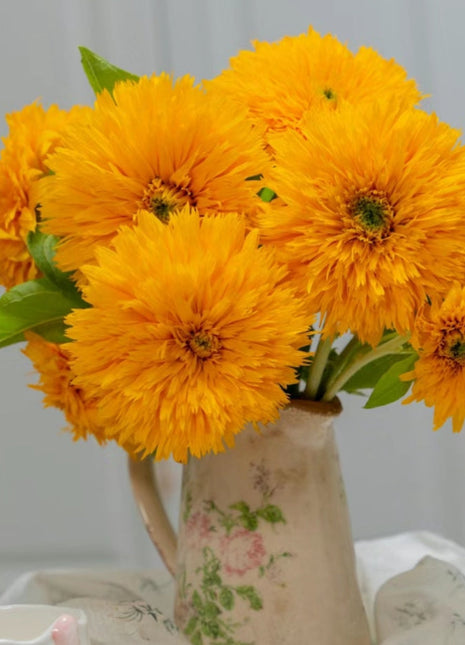
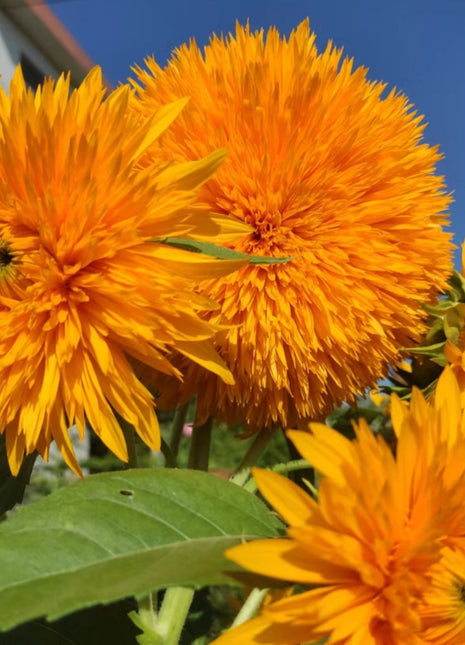
Meicco Teddy Bear Sunflower Seeds
🪴We are committed to providing our customers with quality. affordable seeds. 🌱 💵 Payments Via PayPal® 😍 99.3% of customers buy 100 Seeds(15% Off) or more to share with family or friends ✨Priority is given to delivery after payment ✈ Worldwide Express Shipping Available Teddy bear sunflower. also known as beautiful sunflower. is an annual herb of the family Asteraceae. Its flowers are shaped like the sun. bright flowers. bright colors. simple and natural. with high ornamental value. Teddy bear sunflower is a light-loving flower and needs sufficient sunlight throughout the growth and development period. The stems and leaves grow robustly. the flowers are brightly colored. and the tongue-shaped flowers are shiny. Teddy bear sunflowers are specially bred for viewing. They are stable in shape. strong in adaptability. easy to cultivate. and very easy to raise. Generally. it is propagated by seeding. which can be carried out all year round. The potted plant does not choose the soil. and the general garden soil can be planted. It is best to use loose soil with rich nutrient substrate. which can be extensively maintained like Chlorophytum chinensis. GROWING INFORMATION Sunflowers are grown from seed sown directly in the garden after frost. Direct sow seeds in average soil in full sun after all danger of frost. When choosing a site consider that sunflowers need a well-drained soil. They face the sun. so make sure they are in an open area of the garden. The taller varieties will cast shadows on other plants. so plant these at the north end of your garden. Prepare the soil by removing weeds and working organic matter into the top 6-8 inches of soil; then level and smooth. Most plants respond well to soils amended with organic matter. Compost is a wonderful form of organic matter with a good balance of nutrients and an ideal pH level. it can be added to your planting area at any time. If compost is not available. top dress the soil after planting with 1-2 inches of organic mulch. which will begin to breakdown into compost. After the growing season. a soil test will indicate what soil amendments are needed for the following season. Sow seeds ½ inch deep in groups of 2 or 3 seeds. Space the groups 18-24 inches apart. depending on the variety. Firm soil lightly. water and keep evenly moist. Seedlings will emerge in 7-10 days. Thin to one plant per group when seedlings have two sets of leaves. Keep weeds under control during the growing season. Weeds compete with plants for water. space and nutrients. so control them by either cultivating often or use a mulch to prevent their seeds from germinating. Mulches also help retain soil moisture and maintain even soil temperatures. For annuals an organic mulch of shredded leaves lends a natural look to the bed and will improve the soil as it breaks down in time. Always keep mulches off a plant's stems to prevent possible rot. Keep soil evenly moist but not wet. Once established sunflowers can tolerate drought. No fertilizer is needed unless the soil is poor. Do not over fertilize. Monitor for pests and diseases. Check with your local Cooperative Extension Service for pest controls recommended for your area. Some varieties only produce one bloom so once the bloom is spent. the plant may be removed. Remove plants after they are killed by frost in fall to avoid disease issues the following year. Edible sunflowers will mature in about 3 months or more after sowing. To harvest the seeds. cut the heads off after the stalks are quite dry but before fall or winter rains come. Check the flower heads for maturity to see if the florets in the center of the flower disk have shriveled and the back of the flower head is turning yellow. or the head is starting to droop. Cut flower-heads with a foot of the stalk attached. Hang heads in a warm. dry. well-ventilated place so the seeds may fully ripen and dry. Cheesecloth. netting or a paper bag with holes punched in for ventilation should be placed over the head to protect the seeds and to collect those that may drop from drying. Shorter varieties may be grown in containers. Be sure to use a commercial potting mix. Pollenless varieties make terrific cut flowers. Our Guarantee We truly believe we carry some of the most innovative products in the world. and we want to make sure we back that up with a risk-free 90-day guarantee. If you don't have a positive experience for ANY reason. we will do WHATEVER it takes to make sure you are 100% satisfied with your purchase. Buying items online can be a daunting task. so we want you to realize that there is absolutely ZERO risks in buying something and trying it out. If you don't like it. no hard feelings we'll make it right. We have 24/7/365 Ticket and Email Support. Please contact us if you need assistance.
$7.99 - $19.99
-
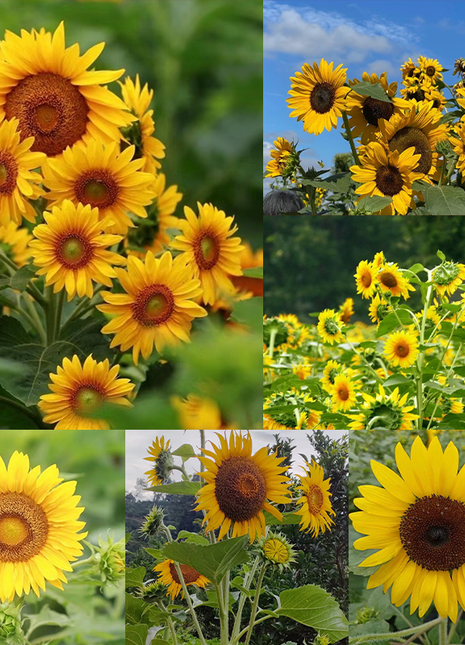
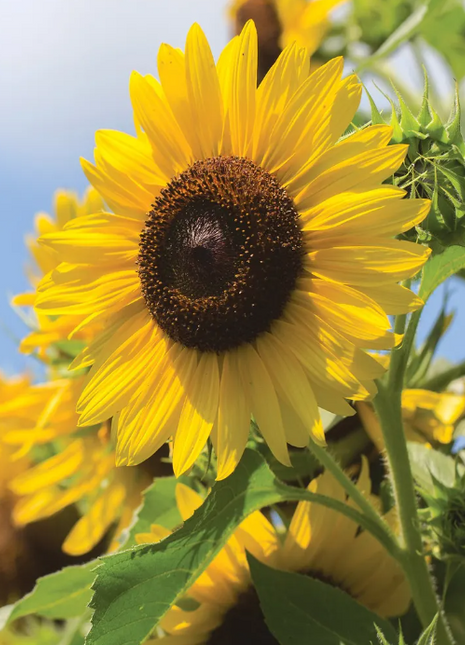
My Store Multi-headed sunflower seeds
🪴We are committed to providing our customers with quality. affordable seeds. 🌱 💵 Payments Via PayPal® 😍 99.3% of customers buy 100 Seeds(15% Off) or more to share with family or friends ✨Priority is given to delivery after payment ✈ Worldwide Express Shipping Available Multi-headed sunflowers are called large-flowered sunflowers. Its flowers are beautiful in color and beautiful in appearance. Multi-branched multi-headed sunflower species. very rare. suitable for garden planting. one can produce 5-10 flowers. How To Grow The Seeds? When planting. you need to wait for the outdoor temperature to reach about 10 degrees to 15 degrees above zero. If the temperature is too low when planting. it will affect the germination rate of the seeds. After the seeds are planted. you need to wait for about 7 days. and the seedlings can gradually emerge. The time is relatively short. Precautions for planting Although multi-headed sunflower has strong adaptability and low requirements. it is a plant that prefers ventilation and sunshine. When planting. it is necessary to choose a sunny place. and at the same time. it cannot be planted too much. Planting too densely will result in slow plant growth. Our Guarantee We truly believe we carry some of the most innovative products in the world. and we want to make sure we back that up with a risk-free 90-day guarantee. If you don't have a positive experience for ANY reason. we will do WHATEVER it takes to make sure you are 100% satisfied with your purchase. Buying items online can be a daunting task. so we want you to realize that there is absolutely ZERO risks in buying something and trying it out. If you don't like it. no hard feelings we'll make it right. We have 24/7/365 Ticket and Email Support. Please contact us if you need assistance.
$7.99 - $16.99
-
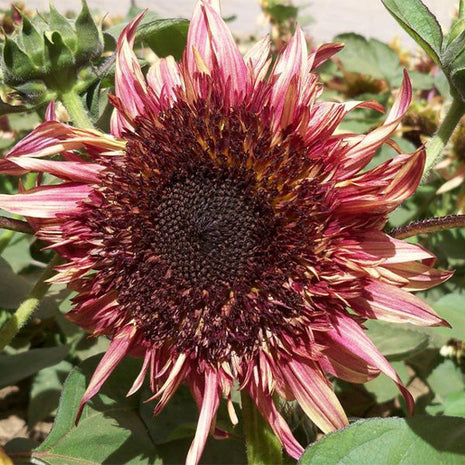
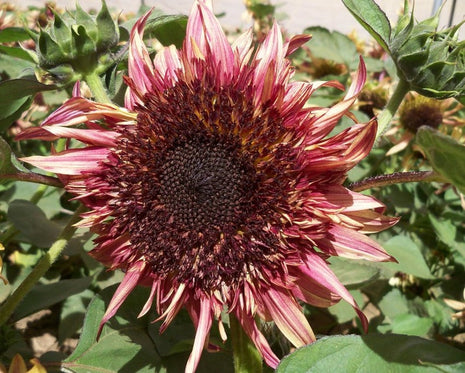
GardenerStar Uniquely different Double Dandy Sunflower Seeds 50 Per Pack
Uniquely different Double Dandy sunflower seeds 50 per packDwarf. very early maturity. prolific flowering AND a unique semi-double petal type with mauve color that is unlike any other sunflower we have created – that describes Double Dandy. In gardens where the light intensity is low. flowers open deep burgundy . then fade to a purplish hue as the flower develops in the sunlight. We hope you agree that Double Dandy stands out as being truly unique in the sunflower world!Petal Color : RedFace Color : DarkPollen : NoStem Type : BranchingMaturity : Early 45 to 50 daysHeight : 1ft (30cm) to 2ft ( 60cm)Uses : Double Petal. Pots. Bedding. HedgesIdeas to try : Very early long flowering reddish mauve double petalsIMPORTANT SHIPPING NOTICE:THERE IS A POSTAL SERVICE DELAY it may take up to 3 weeks to receive your order {US Only} and as much as 60 days international. Totally out of my hands as the postal service is experiencing delays.I have added a tracking service to shipping a an additional cost if you want to add that to your order.I'm sorry for the inconvenience that causes us all.
$8.99 - $12.99
-
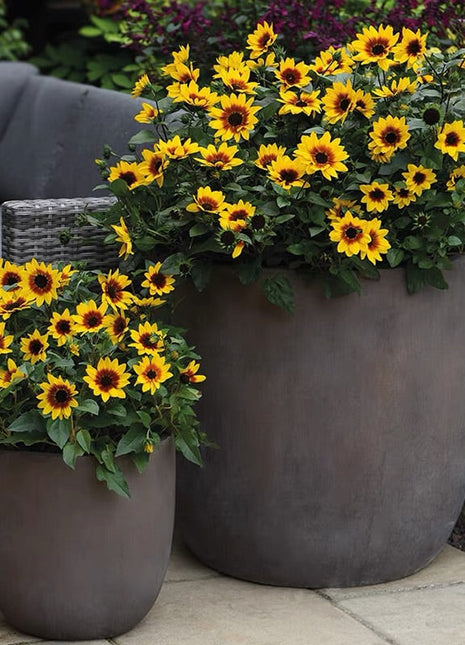
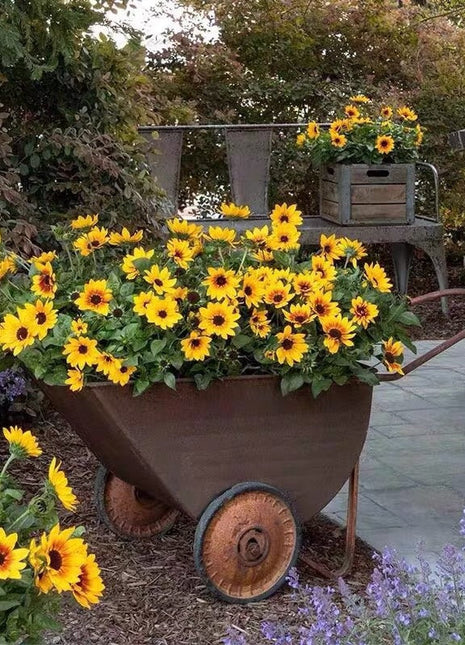
GardenerStar Sunflower Bonsai Flowering Machine, Glorious Years
Plant name: Super Sunflower Glory Years. a pot of flowers can bloom 1000 flowers. perennial plants. can be built by hitting the top to achieve the effect of bursting pots. only not below zero weather. winter can bloom. This flower comes with a sense of hierarchy. planting a piece is also very beautiful.Maintenance tips. 1. light: like the sun. full sun. at least to ensure that more than 4 hours of sunlight per day.2. Fertilizer: you can use fermented sheep manure and Osmocote slow release as a base fertilizer when planting.3. Watering: Water thoroughly when the soil is about to dry. usually about once a day. and not if the soil is wet. but twice a day when the sun is high.Tips: For good flowering. replace the large pot in time after the root system is full; fertilize regularly; Gloriosa does not like high temperature and high humidity environment. do not overwater in summer. and need indoor wintering below 41.00℉.
$6.99 - $9.99
-
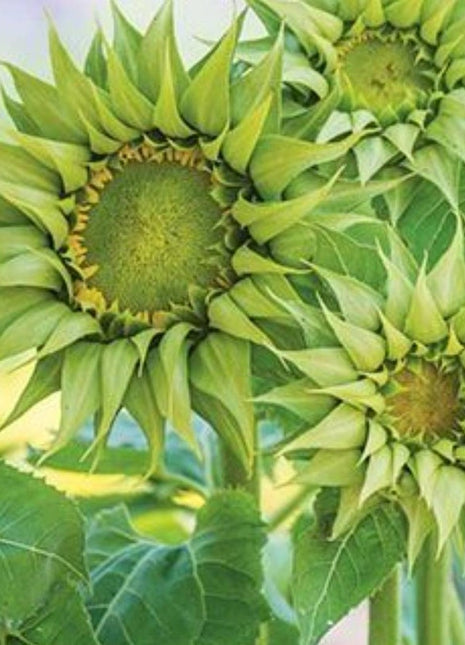
GardenerStar Green sunflowers, sunflower seeds,
Green Sunflowers. uniquely different from other varieties. Annuals.I did start these indoor last season in compostable containers. Sunflowers do not like to be uprooted so give them a head start or go right to garden. If starting outdoors be aware the birds and other friends may get them before they germinate. This sunflower will be sure to add an element of interest to any garden or container. Great as cut flowers in arrangements.Indoor gardening is a great way to beat the boredom and give you something to look forward to.
$6.99 - $9.99
-
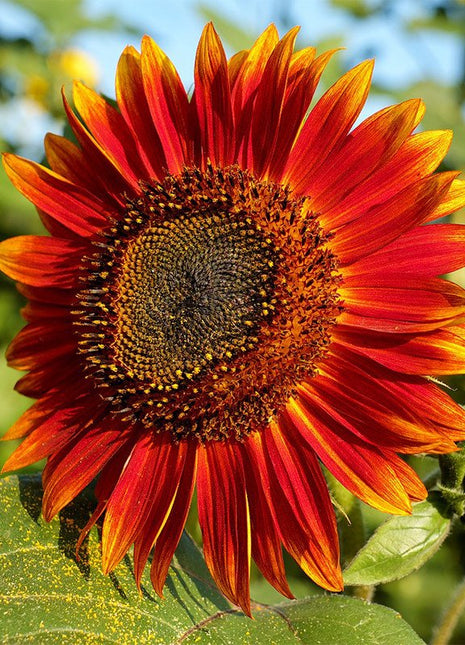
GardenerStar Sunflower Seeds - F1
Product Details Sow Method Direct Sow Sun Full Sun Height 3-4 feet Spread 15-30 inches Ornamental Use Beds. Container. Cut Flowers Life Cycle Annual Growing Information Sunflowers are grown from seed sown directly in the garden after frost. Direct sow seeds in average soil in full sun after all danger of frost. When choosing a site consider that sunflowers need a well-drained soil. They face the sun. so make sure they are in an open area of the garden. The taller varieties will cast shadows on other plants. so plant these at the north end of your garden. Prepare the soil by removing weeds and working organic matter into the top 6-8 inches of soil; then level and smooth. Most plants respond well to soils amended with organic matter. Compost is a wonderful form of organic matter with a good balance of nutrients and an ideal pH level. it can be added to your planting area at any time. If compost is not available. top dress the soil after planting with 1-2 inches of organic mulch. which will begin to breakdown into compost. After the growing season. a soil test will indicate what soil amendments are needed for the following season. Sow seeds ½ inch deep in groups of 2 or 3 seeds. Space the groups 18-24 inches apart. depending on the variety. Firm soil lightly. water and keep evenly moist. Seedlings will emerge in 7-10 days. Thin to one plant per group when seedlings have two sets of leaves. Keep weeds under control during the growing season. Weeds compete with plants for water. space and nutrients. so control them by either cultivating often or use a mulch to prevent their seeds from germinating. Mulches also help retain soil moisture and maintain even soil temperatures. For annuals an organic mulch of shredded leaves lends a natural look to the bed and will improve the soil as it breaks down in time. Always keep mulches off a plant's stems to prevent possible rot. Keep soil evenly moist but not wet. Once established sunflowers can tolerate drought. No fertilizer is needed unless the soil is poor. Do not over fertilize. Monitor for pests and diseases. Check with your local Cooperative Extension Service for pest controls recommended for your area. Some varieties only produce one bloom so once the bloom is spent. the plant may be removed. Remove plants after they are killed by frost in fall to avoid disease issues the following year. Edible sunflowers will mature in about 3 months or more after sowing. To harvest the seeds. cut the heads off after the stalks are quite dry but before fall or winter rains come. Check the flower heads for maturity to see if the florets in the center of the flower disk have shriveled and the back of the flower head is turning yellow. or the head is starting to droop. Cut flower-heads with a foot of the stalk attached. Hang heads in a warm. dry. well-ventilated place so the seeds may fully ripen and dry. Cheesecloth. netting or a paper bag with holes punched in for ventilation should be placed over the head to protect the seeds and to collect those that may drop from drying. Shorter varieties may be grown in containers. Be sure to use a commercial potting mix. Pollenless varieties make terrific cut flowers.
$6.99 - $9.99
-
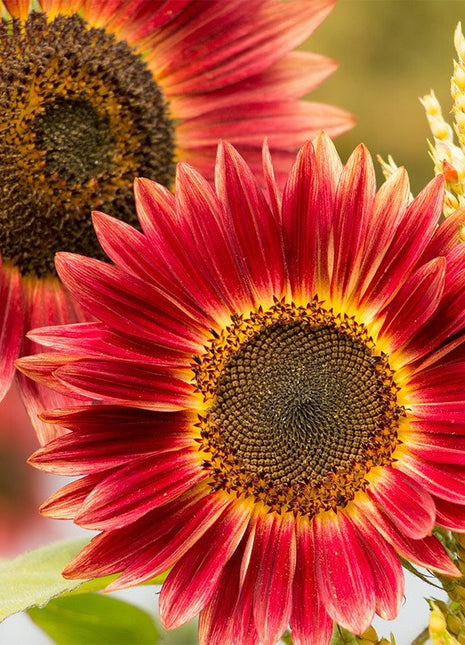
GardenerStar Organic Sunflower Seeds
Product Details Sow Method Direct Sow Sun Full Sun Height 3-4 feet Spread 15-30 inches Ornamental Use Beds. Container. Cut Flowers Life Cycle Annual Growing Information Sunflowers are grown from seed sown directly in the garden after frost. Direct sow seeds in average soil in full sun after all danger of frost. When choosing a site consider that sunflowers need a well-drained soil. They face the sun. so make sure they are in an open area of the garden. The taller varieties will cast shadows on other plants. so plant these at the north end of your garden. Prepare the soil by removing weeds and working organic matter into the top 6-8 inches of soil; then level and smooth. Most plants respond well to soils amended with organic matter. Compost is a wonderful form of organic matter with a good balance of nutrients and an ideal pH level. it can be added to your planting area at any time. If compost is not available. top dress the soil after planting with 1-2 inches of organic mulch. which will begin to breakdown into compost. After the growing season. a soil test will indicate what soil amendments are needed for the following season. Sow seeds ½ inch deep in groups of 2 or 3 seeds. Space the groups 18-24 inches apart. depending on the variety. Firm soil lightly. water and keep evenly moist. Seedlings will emerge in 7-10 days. Thin to one plant per group when seedlings have two sets of leaves. Keep weeds under control during the growing season. Weeds compete with plants for water. space and nutrients. so control them by either cultivating often or use a mulch to prevent their seeds from germinating. Mulches also help retain soil moisture and maintain even soil temperatures. For annuals an organic mulch of shredded leaves lends a natural look to the bed and will improve the soil as it breaks down in time. Always keep mulches off a plant's stems to prevent possible rot. Keep soil evenly moist but not wet. Once established sunflowers can tolerate drought. No fertilizer is needed unless the soil is poor. Do not over fertilize. Monitor for pests and diseases. Check with your local Cooperative Extension Service for pest controls recommended for your area. Some varieties only produce one bloom so once the bloom is spent. the plant may be removed. Remove plants after they are killed by frost in fall to avoid disease issues the following year. Edible sunflowers will mature in about 3 months or more after sowing. To harvest the seeds. cut the heads off after the stalks are quite dry but before fall or winter rains come. Check the flower heads for maturity to see if the florets in the center of the flower disk have shriveled and the back of the flower head is turning yellow. or the head is starting to droop. Cut flower-heads with a foot of the stalk attached. Hang heads in a warm. dry. well-ventilated place so the seeds may fully ripen and dry. Cheesecloth. netting or a paper bag with holes punched in for ventilation should be placed over the head to protect the seeds and to collect those that may drop from drying. Shorter varieties may be grown in containers. Be sure to use a commercial potting mix. Pollenless varieties make terrific cut flowers.
$6.99 - $9.99
-
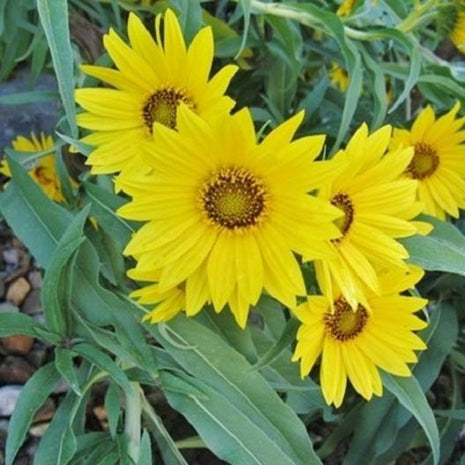
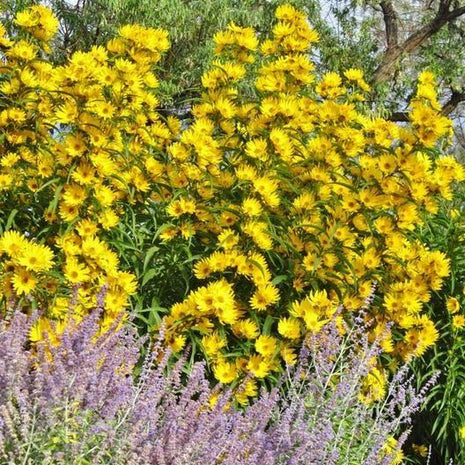
Meicco SUNFLOWER SEEDS - MAXIMILIAN
PRODUCT DESCRIPTION Maximilian Sunflower Seeds -Helianthus maximillianii This North American native is a rarely seen. Perennial Sunflower. Growing in that more "wild" form. it is one of the classic North American Prairie Wildflowers. Once cultivated for its edible rhizome by Native Americans. it is now widely and popularly cultivated as a meadow wildflower or garden ornamental. FAST FACTS Name: Sunflower Seeds - Maximilian Botanical Name: Helianthus maximillianii Life Cycle: Perennial Light Requirement: Full Sun Planting Season: Spring. Fall Plant Type: Tall green stalks with large yellow 3 inch blossoms and dark center. Features: Heirloom. Cut Flower Garden. Easy to Grow & Maintain. Edible. Attracts Pollinators. Deer Resistant. Drought Tolerant Color: Yellow Blooms: Summer. Late Summer. Early Fall. Fall Plant Height: Up to 96 inches Plant Spacing: 8-12 inches Planting Depth: 1/2 inch Sowing Method: Direct Sow Cold Stratification: No Seeds per Packet: 50Pcs or 100Pcs Hardiness Zones: 1. 2. 3. 4. 5. 6. 7. 8. 9. 10 Ships: Year Round PLANTING INSTRUCTIONSHow to Plant Maximillian Sunflowers WHEN TO PLANT SUNFLOWER SEEDSIt is recommended to sow your sunflower seeds directly into your garden rather than start them in starter pots. Sunflowers send down long taproots that can be stunted in small pots. Once all danger of frost has passed and both daytime and nighttime temperatures reach 55F to 60F you are ready to sow your sunflower seeds. WHERE TO PLANT SUNFLOWER SEEDSSunflowers grow best in full-sun locations – receiving at least 6 to 8 hours of full sun exposure per day. Though sunflowers are not finicky. they do appreciate loose. well-draining soil. Choose a location that is sheltered from strong winds. perhaps along a fence or near a building. Also consider the height that the particular variety will reach. HOW TO PLANT SUNFLOWER SEEDSOnce you have chosen your location. dig down to a depth of 2 inches and turn the soil over to loosen it. Many seeds. like poppies. need sun to germinate. This is not the case with sunflowers and in fact need to be pressed 1 inch deep into the soil. If left on the soil surface. more than likely birds will come and eat them before they ever get anywhere close to germination. Final spacing should be 36” apart for giant sunflowers. 24' apart for regular-sized and 12” apart for miniature varieties. HOW TO CARE FOR SUNFLOWERSSunflowers are usually problem-free. Plant early enough so that autumn frosts do not cut your sunflowers' life cycle short. Too much rainfall before and after germination can cause the seeds to rot or bring on downy mildew. Be sure to seed after the rainy season to avoid this. If you would like to harvest the seeds to either replant next year. wait until the end of the bloom cycle. Sunflowers blooms often last 30-45 days. Toward the end of this period. the green back of the flower head will begin to turn yellow and will usually droop at this time. You will also see the seeds swelling on the face of the sunflower. Cover the flowers with paper bags to protect them from birds. Cut off the flower heads and leave inside the brown paper bag. Store this bag in a well-ventilated place like a garage until fully dry. Rub along the seeds with the palm of your hand and the seeds should fall right out into your bag. or work over a cookie sheet. Store seeds in a cool. dry environment until you are ready to reseed next year. To eat: Soak overnight in water. or salt water. Drain. spread on a shallow baking sheet. and roast for 3 hours at 200F or until crisp.
$6.99 - $9.99
-
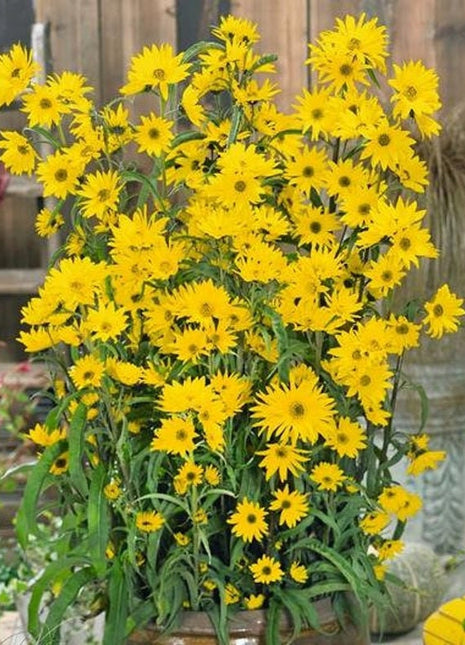
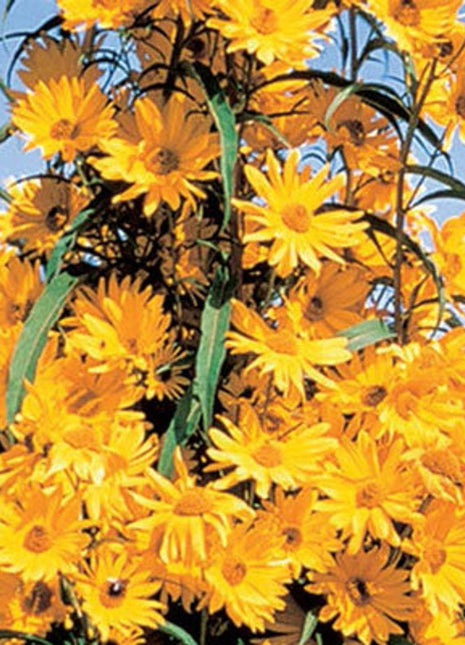
GardenerStar Giant Maximillian Sunflower Seeds - Perennial Sunflower
Materials: flower seeds. garden seeds. edible plants GIANT SUNFLOWERS: Each plant can get up to hundreds of sunflowers and 12 feet tallEASY TO GROW: Hardy perennial comes back year after yearPOLLINATOR FRIENDLY: Great for Bees and Butterflies. Good for nature and pretty to see
$6.99 - $9.99
-
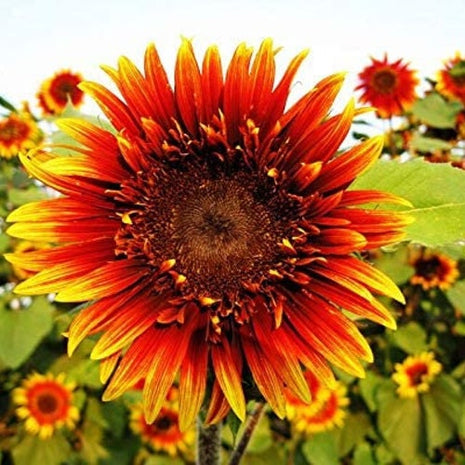
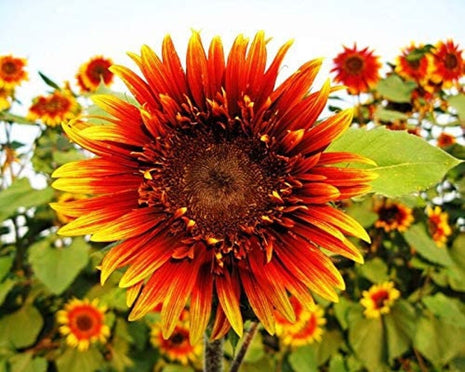
GardenerStar Joker Sunflower Seeds 50 per pack
Joker was named after the Harlequin Joker clowns of the late 1800s in Italian Theatre tradition. The Joker was almost always dressed in a costume with one side one color. and the other a contrasting shade with a repeating pattern. And that exactly describes our Joker sunflower – contrasting colors in a repeating pattern with a unique semi-double petal orange and red bicolor flower on branching plants. Plants are vigorous and have a long flowering period. You often will find varying degrees of double petal flowers on the same plant! It is great by itself or mixed with another of our sunflowers. Product Details Sow Method Direct Sow Sun Full Sun Height 3-4 feet Spread 15-30 inches Ornamental Use Beds. Container. Cut Flowers Life Cycle Annual Growing Information Sunflowers are grown from seed sown directly in the garden after frost. Direct sow seeds in average soil in full sun after all danger of frost. When choosing a site consider that sunflowers need a well-drained soil. They face the sun. so make sure they are in an open area of the garden. The taller varieties will cast shadows on other plants. so plant these at the north end of your garden. Prepare the soil by removing weeds and working organic matter into the top 6-8 inches of soil; then level and smooth. Most plants respond well to soils amended with organic matter. Compost is a wonderful form of organic matter with a good balance of nutrients and an ideal pH level. it can be added to your planting area at any time. If compost is not available. top dress the soil after planting with 1-2 inches of organic mulch. which will begin to breakdown into compost. After the growing season. a soil test will indicate what soil amendments are needed for the following season. Sow seeds ½ inch deep in groups of 2 or 3 seeds. Space the groups 18-24 inches apart. depending on the variety. Firm soil lightly. water and keep evenly moist. Seedlings will emerge in 7-10 days. Thin to one plant per group when seedlings have two sets of leaves. Keep weeds under control during the growing season. Weeds compete with plants for water. space and nutrients. so control them by either cultivating often or use a mulch to prevent their seeds from germinating. Mulches also help retain soil moisture and maintain even soil temperatures. For annuals an organic mulch of shredded leaves lends a natural look to the bed and will improve the soil as it breaks down in time. Always keep mulches off a plant's stems to prevent possible rot. Keep soil evenly moist but not wet. Once established sunflowers can tolerate drought. No fertilizer is needed unless the soil is poor. Do not over fertilize. Monitor for pests and diseases. Check with your local Cooperative Extension Service for pest controls recommended for your area. Some varieties only produce one bloom so once the bloom is spent. the plant may be removed. Remove plants after they are killed by frost in fall to avoid disease issues the following year. Edible sunflowers will mature in about 3 months or more after sowing. To harvest the seeds. cut the heads off after the stalks are quite dry but before fall or winter rains come. Check the flower heads for maturity to see if the florets in the center of the flower disk have shriveled and the back of the flower head is turning yellow. or the head is starting to droop. Cut flower-heads with a foot of the stalk attached. Hang heads in a warm. dry. well-ventilated place so the seeds may fully ripen and dry. Cheesecloth. netting or a paper bag with holes punched in for ventilation should be placed over the head to protect the seeds and to collect those that may drop from drying. Shorter varieties may be grown in containers. Be sure to use a commercial potting mix. Pollenless varieties make terrific cut flowers.
$8.99 - $12.99
-
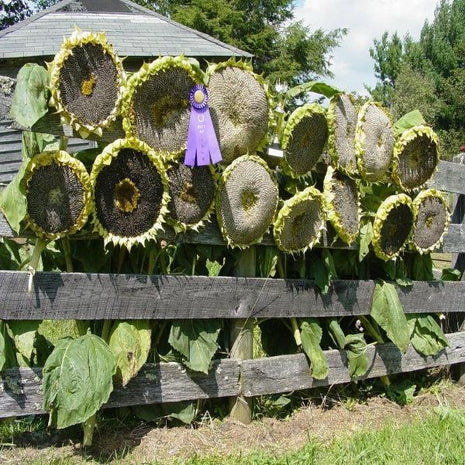
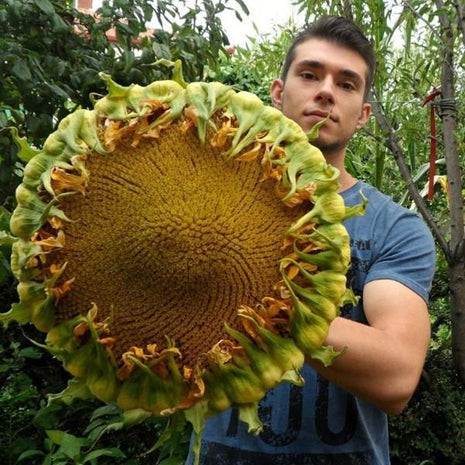
Supernova 50 Pcs Mongolian Giant Sunflower Seeds
Product Details Sow Method Direct Sow Sun Full Sun Height 6-8 feet Spread 18-24 inches Ornamental Use Beds. Container. Cut Flowers Life Cycle Annual Growing Information Sunflowers are grown from seed sown directly in the garden after frost. Direct sow seeds in average soil in full sun after all danger of frost. When choosing a site consider that sunflowers need a well-drained soil. They face the sun. so make sure they are in an open area of the garden. The taller varieties will cast shadows on other plants. so plant these at the north end of your garden. Prepare the soil by removing weeds and working organic matter into the top 6-8 inches of soil; then level and smooth. Most plants respond well to soils amended with organic matter. Compost is a wonderful form of organic matter with a good balance of nutrients and an ideal pH level. it can be added to your planting area at any time. If compost is not available. top dress the soil after planting with 1-2 inches of organic mulch. which will begin to breakdown into compost. After the growing season. a soil test will indicate what soil amendments are needed for the following season. Sow seeds ½ inch deep in groups of 2 or 3 seeds. Space the groups 18-24 inches apart. depending on the variety. Firm soil lightly. water and keep evenly moist. Seedlings will emerge in 7-10 days. Thin to one plant per group when seedlings have two sets of leaves. Keep weeds under control during the growing season. Weeds compete with plants for water. space and nutrients. so control them by either cultivating often or use a mulch to prevent their seeds from germinating. Mulches also help retain soil moisture and maintain even soil temperatures. For annuals an organic mulch of shredded leaves lends a natural look to the bed and will improve the soil as it breaks down in time. Always keep mulches off a plant's stems to prevent possible rot. Keep soil evenly moist but not wet. Once established sunflowers can tolerate drought. No fertilizer is needed unless the soil is poor. Do not over fertilize. Monitor for pests and diseases. Check with your local Cooperative Extension Service for pest controls recommended for your area. Some varieties only produce one bloom so once the bloom is spent. the plant may be removed. Remove plants after they are killed by frost in fall to avoid disease issues the following year. Edible sunflowers will mature in about 3 months or more after sowing. To harvest the seeds. cut the heads off after the stalks are quite dry but before fall or winter rains come. Check the flower heads for maturity to see if the florets in the center of the flower disk have shriveled and the back of the flower head is turning yellow. or the head is starting to droop. Cut flower-heads with a foot of the stalk attached. Hang heads in a warm. dry. well-ventilated place so the seeds may fully ripen and dry. Cheesecloth. netting or a paper bag with holes punched in for ventilation should be placed over the head to protect the seeds and to collect those that may drop from drying. Shorter varieties may be grown in containers. Be sure to use a commercial potting mix. Pollenless varieties make terrific cut flowers.
$12.99 $6.99
-
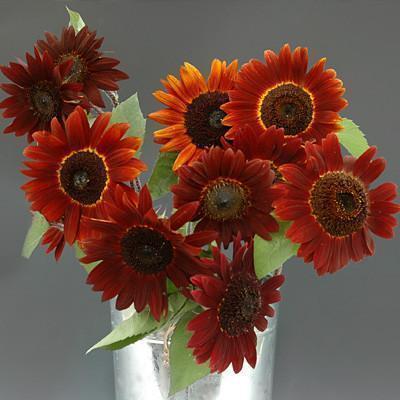
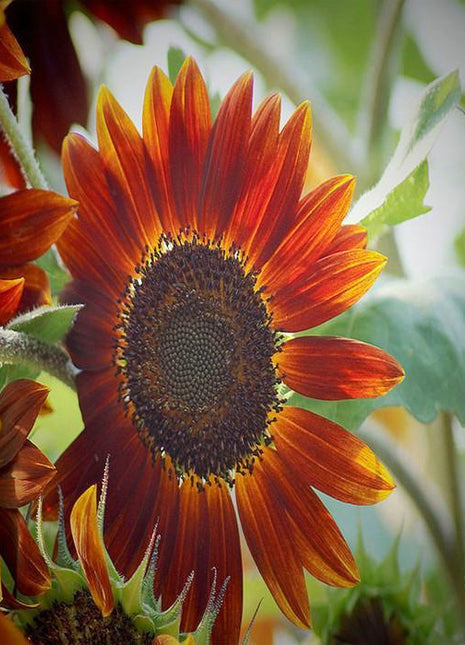
Harris Sunflower Infrared Mix F1
For a range of shades in the red spectrum. we recommend this pollen-free mixture. Ranging in shades from soft red to a dark red plus some red bicolors. flowers are single with dark central disks.Color: Ranging in shades from soft red to a dark red plus some red bicolors. flowers are single with dark central disksAnnual PACKAGING Approximately 40 seeds per pound CULTURE Soil temperature: 70 - 75 degrees fahrenheit Germination lighting: Dark required Germination days: 4 - 8 days Grow on temperature day: 55 - 60 degrees fahrenheit Plant spread: 18 - 24 inches Plant height: 72'' Plant type: annual Maturation days: 60-70 days
$5.70 - $7.70
You have seen 72 out of 79 products









































